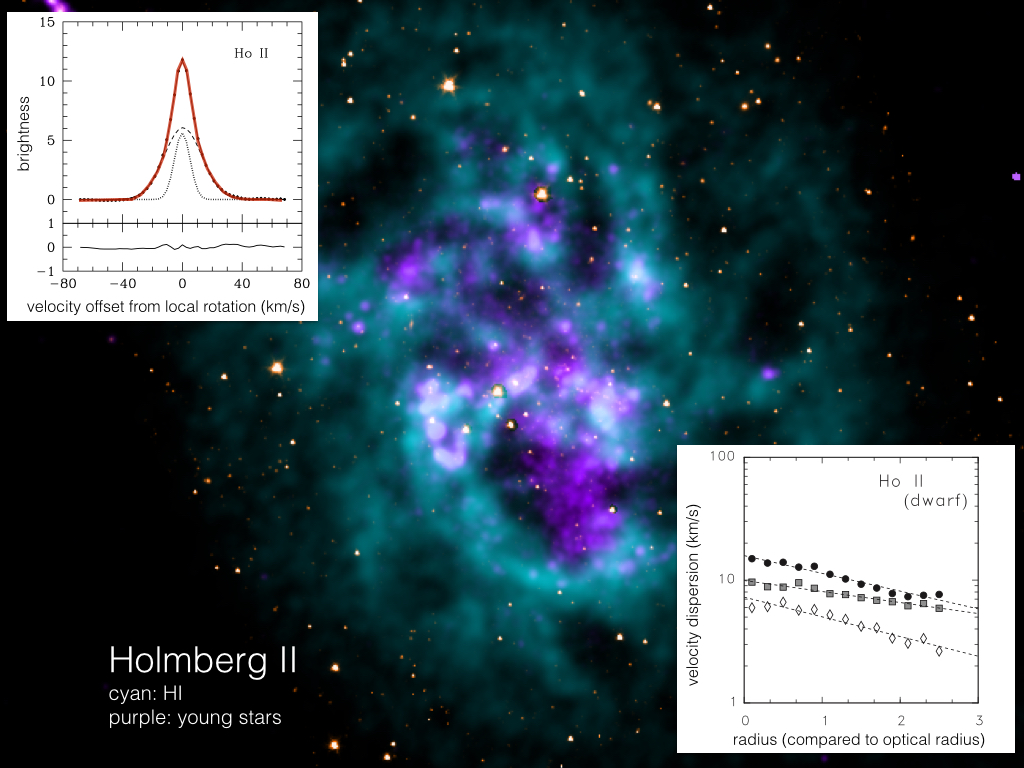Daily Image
11-08-2015Cool and warm gas in nearby galaxies
| Submitter: | Erwin de Blok |
| Description: | Young stars produce a lot of energy and heat the gas that surrounds them. We can see this in galaxies as an increase in the velocity dispersion (random motions) in the gas (observed as neutral hydrogen with radio telescopes). However, for stars to form the gas must be cool enough for gravity to overcome these random motions so that it can collapse. For stars to form we therefore need gas with a low velocity dispersion. We can see these effects directly in radio observations of the gas in galaxies. The colour picture shows an image of the neutral hydrogen (in cyan) of dwarf galaxy Holmberg II that was observed with the Very Large Array in the US as part of the THINGS survey. The purple shows the locations of young stars in this galaxy using ultra-violet data obtained with the GALEX space observatory. By summing together many of the neutral hydrogen spectra in these radio data, we can obtain a very high signal-to-noise spectrum that shows the amount of gas with respect to the local rotation velocity. This spectrum is shown in red in the top-left panel. The profile can be decomposed into two components, one narrow, low-velocity dispersion component (dotted profile, representing cool gas) and one broad, high-velocity dispersion component (dashed profile, representing warm gas). In the bottom part of that panel the difference between the component fits and the data is shown. It is clear that two components are a good representation of the data. We can measure the profiles at many radii in this galaxy, and determine the velocity dispersion of the total profile, as well as the broad and narrow components. These dispersion values are shown in the bottom-left panel. The total profile is shown as gray squares, the broad component as filled circles and the narrow component as open diamonds. Both the narrow and broad dispersions are lower in the outer parts of the galaxy, probably due to the smaller input from (for example) young stars (the colour picture shows very few young stars in the outer parts). The total dispersion remains constant as a function of radius though. This is due to the changing balance between the amounts of cool and warm gas from the inner to the outer parts of a galaxy. In the inner parts the amount of cool gas is much higher, so the low-velocity dispersion gas keeps the total velocity dispersion low. In the outer parts there is very little cool gas, so the total velocity dispersion is dominated by that of the warm gas. The fact that the balance is such that the total dispersion remains approximately constant is an important boundary condition for theories of star formation. This work was done by (then) PhD student Roger Ianjamasimanana from South Africa, with (amongst others) ASTRON scientists Erwin de Blok and George Heald. This work was recently published in the Astronomical Journal (AJ, 150, 47) and can also be found at http://arxiv.org/abs/1506.04156 |
| Copyright: | Erwin de Blok |
| Tweet |  |
